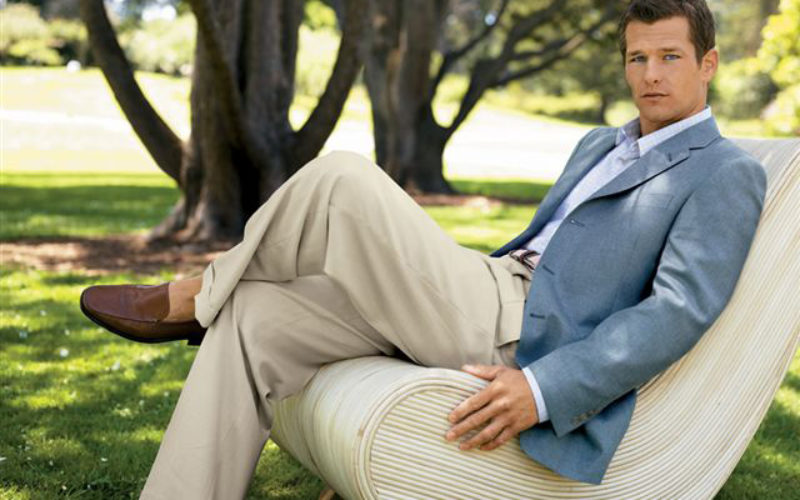Q. I gasped when you recommended a short sleeve shirt under a blazer. I’ve always thought a blazer, or suit coat, demanded a cuff peeking below the end of a jacket sleeve. Whether a French or barrel cuff, or the cuff of a long sleeved polo or sweater, something needs to show. To me, it seems as visually disconcerting as a too-short, or too-long tie.
A. Well, you caught me in my attempt to be flexible. You are certainly right that the usual rule is to expose “a bit of linen” beyond the jacket’s sleeve. The best look with any blazer, sports jacket, or suit jacket is for the sleeve of the shirt worn under it to be long enough to be seen. That is what I almost always recommend. In my defense and in an effort to show just how varied and versatile a navy blazer can be, I stretched a bit and included one type of short-sleeved shirt, a knit polo.
I definitely agree with you that a short-sleeved shirt, especially that contradiction of terms, namely, “a short-sleeve dress shirt,” is not the most acceptable look when layered under a blazer. Men who are clothing-aware (as you obviously are), might not be comfortable with this look. However, not all men are in the category of knowledgeable or fashion-forward dressers; many have a far more relaxed attitude towards what they wear.
A typical man, say, in academia or the tech industries, certainly might spend a large part of his time (especially in warm weather) dressed in some type of shirt with short sleeves. He might consider it more appropriate in a work situation to wear a short-sleeved shirt, perhaps a plaid, rather than a polo shirt. And he might keep a blazer or sports jacket handy for those times when he wants an extra layer, when the air conditioning is hiked up too high or when going out to a restaurant that might be too cold. Short of a formal setting, very few would think of such a man as being inappropriately dressed.
While a short-sleeved button-front shirt has many limitations, the standard polo is a useful essential. In fact, except for a navy blazer, I can hardly think of any item of men’s clothing that is as versatile, and I think every man should understand what an important role it can play in his wardrobe. By definition, a polo shirt is a pullover knit shirt with a collar and a few front buttons. The fabric is usually all-cotton, but can be a cotton blend or even silk or wool. The polo is dressier than a collarless T-shirt, but less dressy than a woven fabric short-sleeve shirt; even so, while the most sophisticated dressers might have dozens of knit polos in their wardrobes, and perhaps a casual Hawaiian shirt or two, they are not likely to own even one short-sleeved “dress shirt”!
Polo shirts, with their many possible variations, serve different purposes for different men. Standard attire on the golf course and on tennis courts, they can be “dressed up” for business casual or “dressed down” for backyard barbecues. They come in solid colors (white, pastels, brights, and darks) and in every conceivable variation of stripe. Occasionally, you will find patterned polos. Many have embroidered logos, and many do not. Some have a contrasting collar design. The price range is huge, from $15 to designer models that exceed $300 (sometimes by a lot).
Polos may be worn either informally untucked or more formally tucked in. Usually, they are paired with such casual pants as chinos and jeans, with shorts, even over swim shorts; but a well-fitting polo shirt in pristine condition can also work tucked into dress trousers and worn with a nice belt. If you do decide to layer a blazer over a polo shirt, avoid the dressiest blazers, such as a double-breasted with elegant monogrammed or enamel buttons.
Finally, while it may seem obvious, a few guidelines about fit and how to wear a polo: Even though this is not a tailored garment, it still should fit correctly, neither too large nor too tight. Sleeves should be slim fitting; they should almost hug your arms and not hang too loosely. Wear the shirt with one or two buttons left open.
Please send your men’s dress and grooming questions or comments to MALE CALL: Lois.Fenton@prodigy.net









